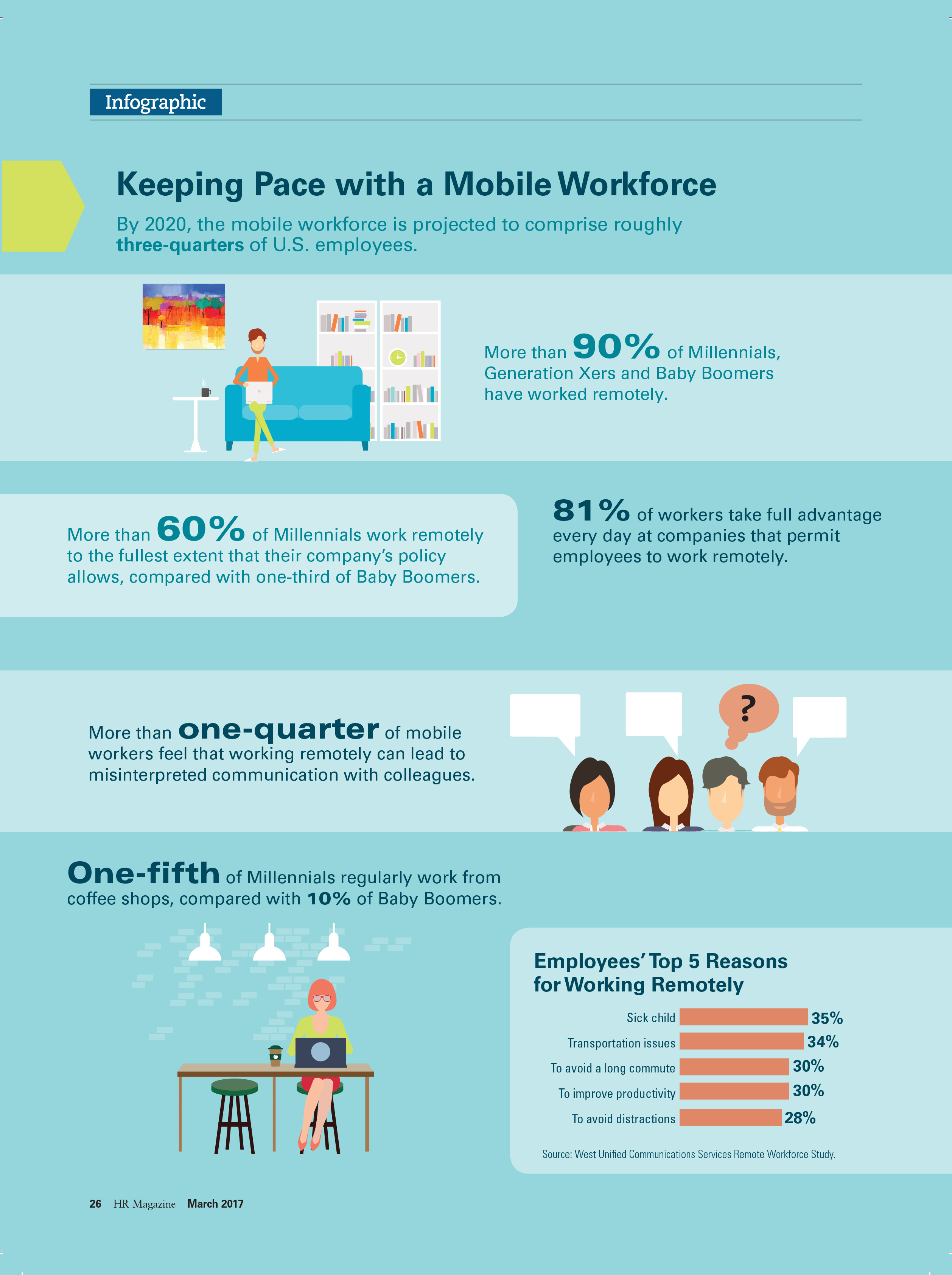
*As originally seen on Forbes.com
In a mere 3 years the mobile workforce is projected to comprise roughly three-quarters of U.S. employees.
Is your organization ready?
According to Gallup, remote working has been on the rise since 2012: from 39% in 2012 to 43% in 2016. The desire to work remotely is here to stay and it isn’t limited to a few select industries. Gallup found that the finance, insurance and real estate industries experienced the greatest surge in time spent working remotely, followed by transportation, manufacturing or construction, and retail industries.
We love this infographic from HR Magazine which shows the latest statistics and trends:

Society for Human Resource Management
While remote work may not make sense for all organizations or for all roles within an organization, it is important to take a closer look. Whether you have a remote workforce or are thinking it may be a good idea to implement in your organization, there are ways to make sure your team stays engaged. Let’s dive into the three keys to optimizing your remote workers’ experience.
Explicit Communication: We want to ensure that we are giving someone Safety, Belonging, Mattering via our words and written communications. When we communicate often (results, requests, info updates) we include people—and we foster a sense of us all belonging together. We want to engage everyone during meetings and if possible, have those meetings via video conferencing. Remember, only 7% of communication is the actual content, so seeing each other is essential. When relying on other methods of communication, such as text or email, you can use my coding system to optimize email communication to get optimal results. This will save time, clear up confusion, manage feedback and make sure everyone is on the same page.
Effective Delegation: There is effective delegation, and there is “rubber band” delegation: when we delegate something and it snaps back to us incomplete. Here’s our 5-Step Effective Delegation Process that our clients find helps them to end rubber band delegation, and increase ownership and accountability. With remote workers effective delegation is even more essential as the “walking by your cubicle” conversations are non-existent. This fosters ownership and reduces the likelihood of the “order giver-order taker” dynamic, which crushes the spirit of ownership, innovation, and a feeling of empowerment.
Perceptual Positions: These make the difference! Perceptual is your perception in relation to immediate sensory experience. Position is the physical location of your body. This is an exercise that my clients and their teams have found to be extremely helpful when conflict arises in their organizations—or prior to a potentially challenging conversation taking place. This tool is ideal for remote workers because if we can gain clarity into what the other person is experiencing, even when we aren’t in the same office space as they are, we can communicate more effectively as well as understand their potential struggles. The result? Productivity rises and outcomes are achieved faster. You can try out Perceptual Positions here. The key is to get on another person’s “map”—to get a feeling for what it means to be them. Taking the time to meet a person where they are the greatest way to establish rapport, connection, trust.
Remote workers are on the rise. Are you ready?






